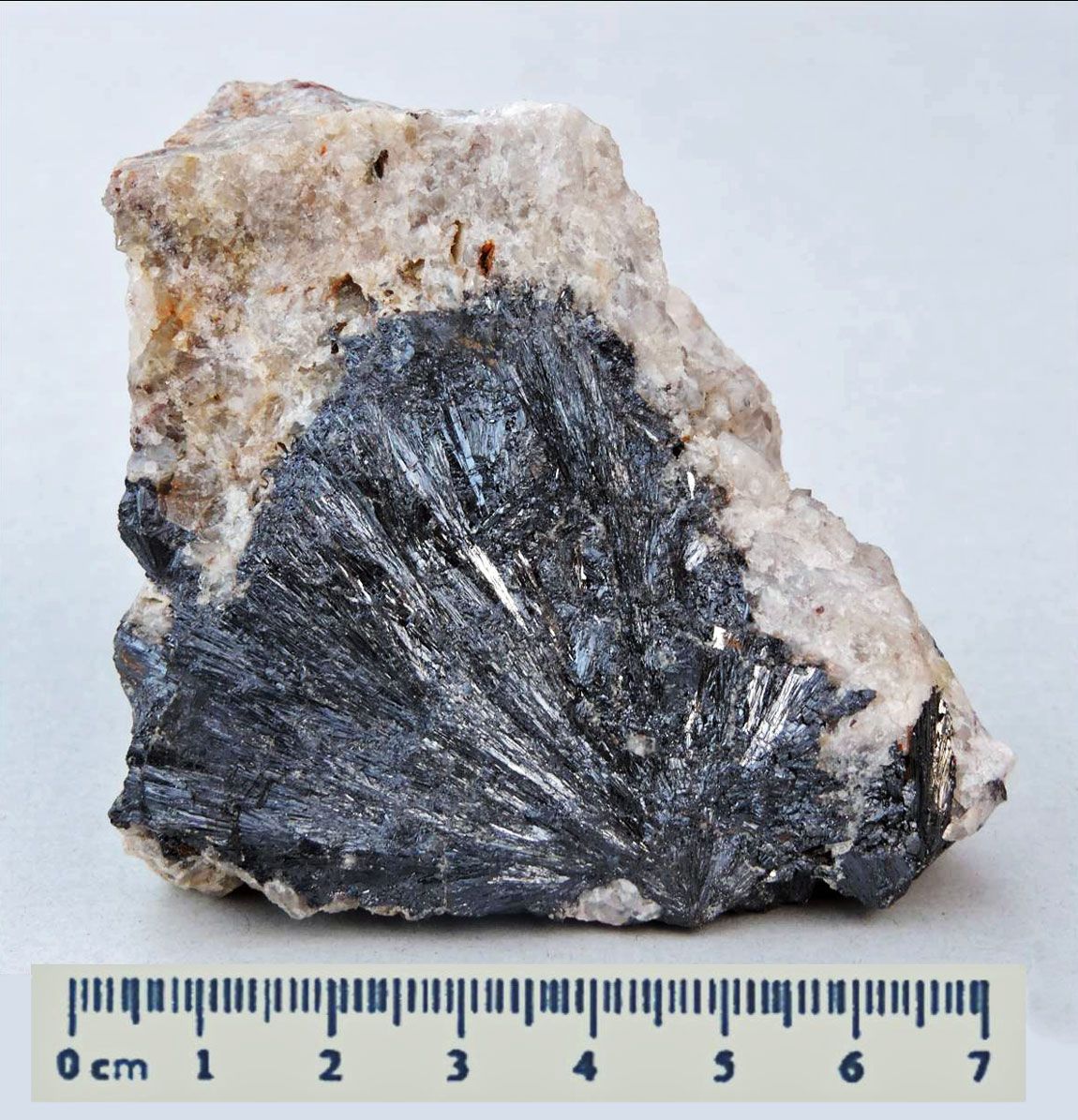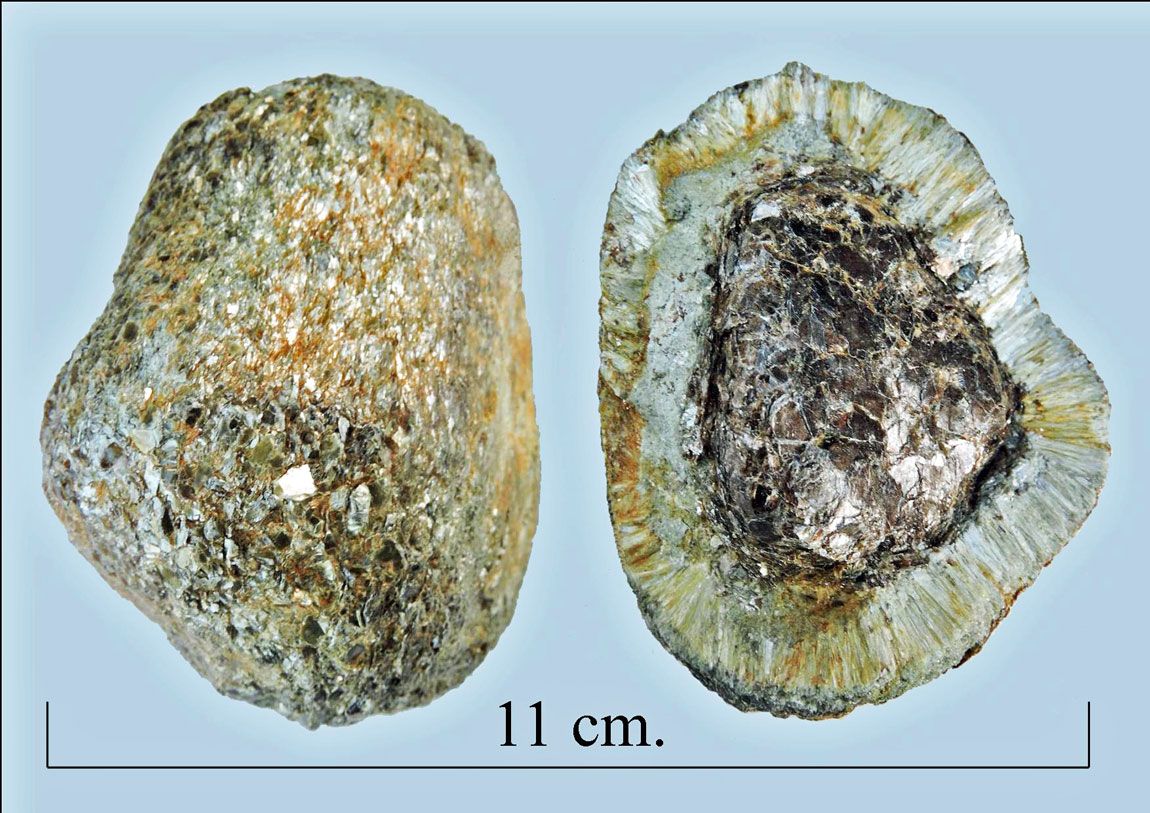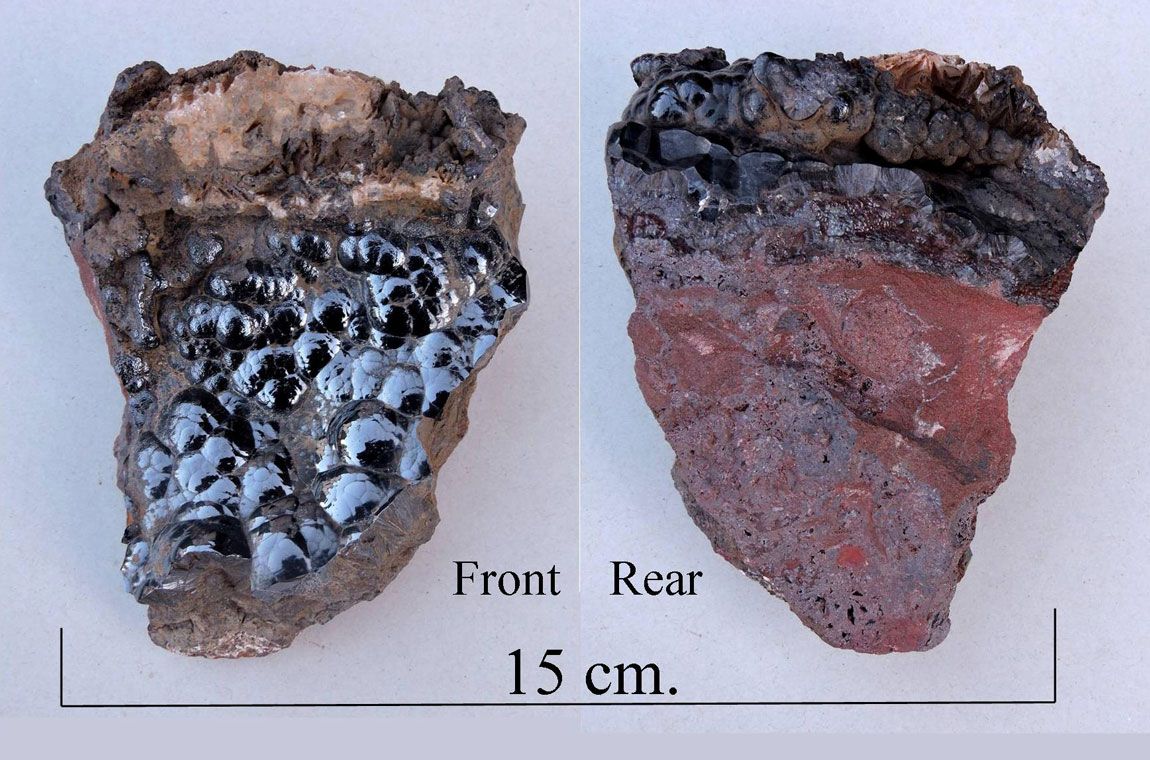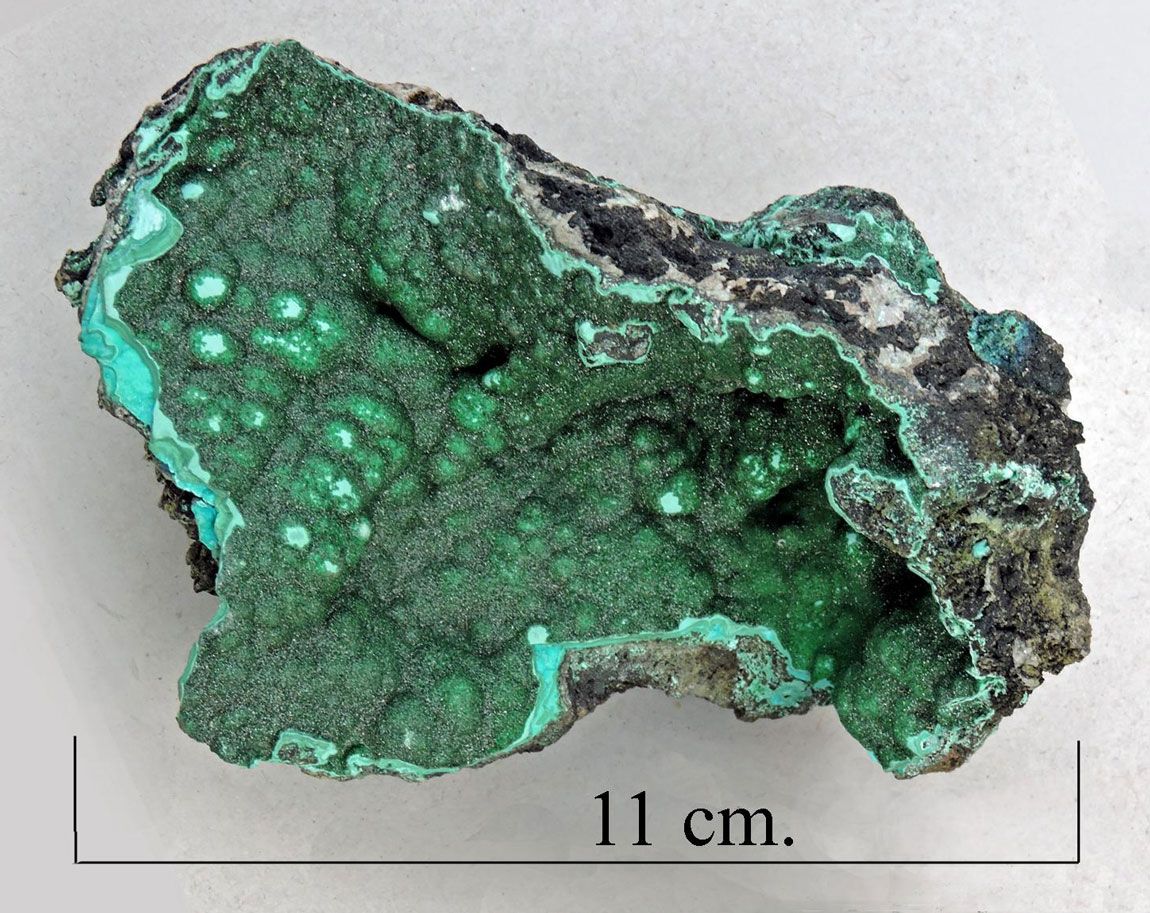
Goethite. Cornwall.
Goethite is hydrated iron oxide, (FeO(OH)). It is often formed from the breakdown of other iron minerals, and is a commonplace mineral. It was named in 1805 after J. W. von Goethe, a German poet and philosopher. This specimen comes from Looe, Cornwall, and is a fine specimen of a compact mass of radiating acicular crystals.



